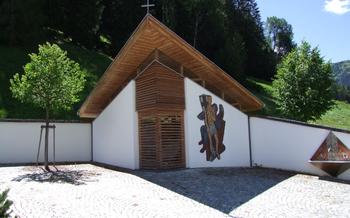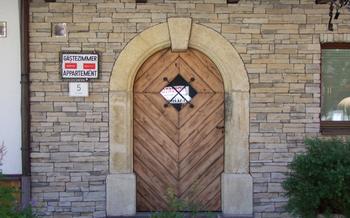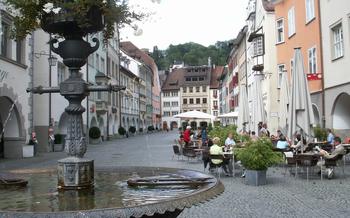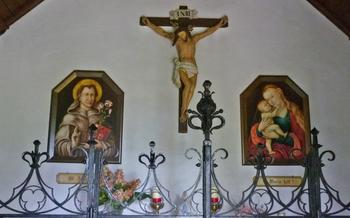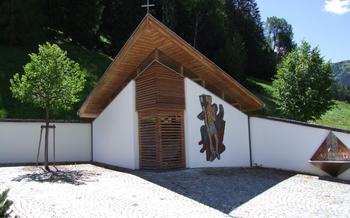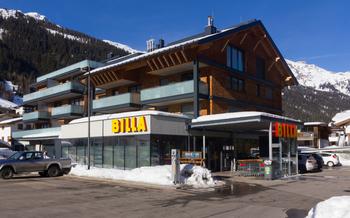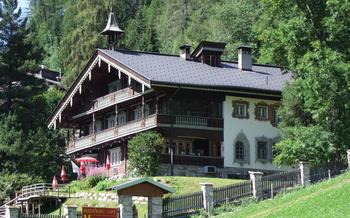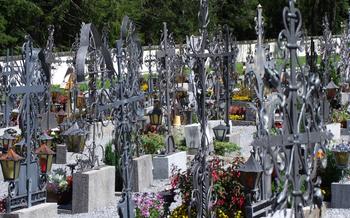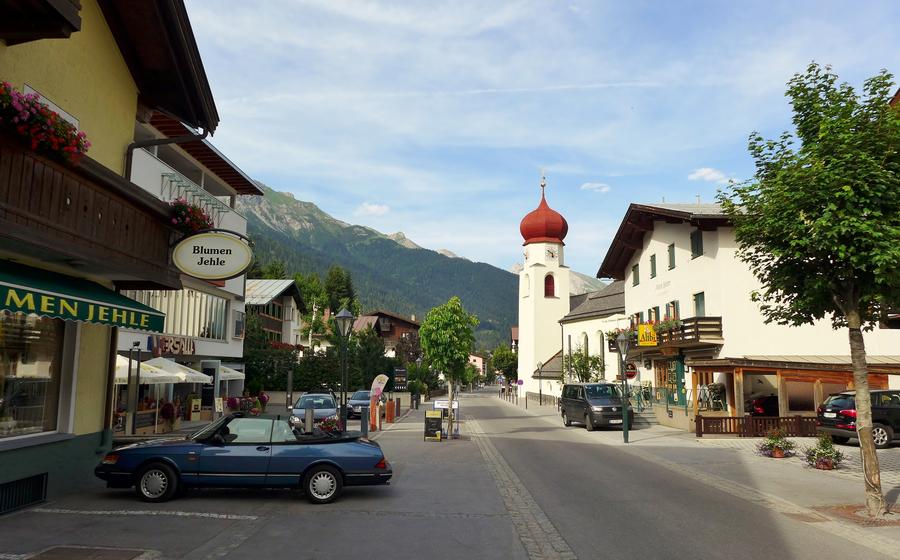
Arlberg Giro Bike Race
- Atop the Arlberg Pass
- Arlberg Giro Bike Race - An Overview:
- Race Categories and Distances
- Race Route and Challenges
- Training and Preparation
- Equipment and Gear
- Race Day Logistics
- Mid-Race Strategy and Nutrition
- Safety and Risk Management
- Spectator Experience
- Post-Race Recovery: Embracing Rest and Renewal
- Race Results and Awards
- Local Culture and Cuisine
- Accommodations and Travel
- Insider Tip:
Atop the Arlberg Pass
At the heart of the majestic Austrian Alps, where towering peaks and lush valleys converge, lies the Arlberg Pass, a legendary gateway that has witnessed centuries of history and cultural exchange. This strategic mountain pass, connecting the regions of Tyrol and Vorarlberg, has long been a vital trade route and a symbol of unity.
As you ascend the winding roads towards the summit, the panoramic vistas that unfold are simply breathtaking. Verdant meadows, dotted with wildflowers, cascade down the hillsides, while the snow-capped peaks of the surrounding mountains pierce the azure sky. The crisp mountain air invigorates the senses, leaving you in awe of nature's splendor.
The Arlberg Pass has played a pivotal role in shaping the region's rich cultural heritage. From ancient times, it served as a passageway for traders, pilgrims, and armies, fostering cultural exchange and the blending of traditions. Today, the pass continues to attract visitors from around the world, drawn to its scenic beauty, historical significance, and the allure of the Arlberg Giro Bike Race, which takes cyclists on an unforgettable journey through this alpine paradise.
Arlberg Giro Bike Race - An Overview:
The Arlberg Giro Bike Race is an iconic cycling event that takes place in the picturesque Arlberg region of Austria. This challenging race is a true test of endurance, skill, and determination, attracting cyclists and spectators from around the world.
The concept of a "Giro" in cycling refers to a multi-stage race, where riders compete over several days, covering significant distances and terrain. The Arlberg Giro Bike Race embodies this format, offering participants the opportunity to push their limits and experience the thrill of competition in a stunning alpine setting.
The race has a rich history, dating back to 1993 when it was first organized. Over the years, it has evolved into one of the most prestigious cycling events in the region, drawing both amateur and professional cyclists eager to conquer the challenging course.
The popularity of the Arlberg Giro Bike Race can be attributed to its unique blend of natural beauty, challenging terrain, and a welcoming atmosphere. Cyclists are captivated by the opportunity to ride through breathtaking landscapes, while spectators are treated to the excitement of watching riders battle it out on the demanding course.
Race Categories and Distances
The Arlberg Giro Bike Race offers a range of categories to cater to cyclists of different abilities and experience levels. Each category is associated with specific distances and challenges, allowing participants to choose a race that suits their fitness and skill level.
-
Hobby: This category is designed for recreational cyclists who want to enjoy the race without the pressure of competition. The distance for the Hobby category is approximately 60 kilometers, with a total elevation gain of around 1,500 meters.
-
Sport: The Sport category is suitable for more experienced cyclists who are looking for a challenging but achievable ride. The distance for the Sport category is approximately 80 kilometers, with a total elevation gain of around 2,000 meters.
-
Expert: The Expert category is reserved for elite cyclists who are up for a grueling challenge. The distance for the Expert category is approximately 100 kilometers, with a total elevation gain of over 3,000 meters.
Each category has its own significance, offering participants the opportunity to push their limits and achieve personal goals. The time limits and cutoff points for each distance ensure that the race remains fair and challenging for all participants.
Race Route and Challenges
The Arlberg Giro Bike Race takes cyclists on a breathtaking journey through the stunning landscapes of the Arlberg region. The race route is meticulously designed to showcase the region's natural beauty while presenting participants with a series of challenging obstacles.
The course begins at the Arlberg Pass, the highest point on the route, and winds its way through picturesque villages, lush meadows, and dense forests. Cyclists will encounter a variety of terrain, from steep climbs that test their endurance to technical descents that demand skill and precision.
One of the most iconic challenges of the race is the climb up to the Flexen Pass, which offers breathtaking panoramic views of the surrounding mountains. The steep gradient and relentless switchbacks make this ascent a true test of strength and determination.
The route also features several technical descents, where cyclists must navigate narrow trails, loose gravel, and sharp turns. These sections require riders to be highly skilled in handling their bikes and maintaining control at high speeds.
The unpredictable weather conditions in the Arlberg region can add an additional layer of challenge to the race. Cyclists may encounter rain, fog, or even snow, which can make the course slippery and treacherous.
To successfully navigate the Arlberg Giro Bike Race, riders need to be well-prepared, both physically and mentally. They must have the endurance to tackle the demanding climbs, the skill to handle the technical descents, and the adaptability to cope with changing weather conditions.
One of the most memorable moments from a past Arlberg Giro Bike Race was when a participant, caught in a sudden downpour, had to quickly adjust his strategy. He switched to a lower gear, adopted a more cautious riding style, and focused on maintaining traction on the slippery roads. His ability to adapt to the changing conditions allowed him to safely navigate the treacherous descent and finish the race successfully.
Training and Preparation
The Arlberg Giro Bike Race demands a high level of fitness and preparation. Embarking on a comprehensive training regimen is crucial for success. Begin by assessing your current fitness level and gradually increase your training intensity and duration. Incorporate cycling-specific exercises to enhance your pedaling efficiency and power. Strength training and core work will improve your stability and endurance on the bike.
Focus on building a strong aerobic base by incorporating long, steady rides into your training plan. Interval training, which involves alternating between high-intensity efforts and recovery periods, will help you develop your anaerobic capacity, essential for tackling the race's challenging climbs. Practice riding in different terrains, including hills, flats, and descents, to prepare for the diverse conditions you'll encounter on the race course.
Nutrition plays a vital role in your training and race-day performance. Ensure a balanced diet rich in carbohydrates, proteins, and healthy fats. Experiment with different foods and supplements to find what works best for you during long rides. Hydration is equally important, so practice drinking regularly during your training sessions.
Mental preparation is often overlooked but is just as crucial as physical training. Visualize yourself successfully completing the race, breaking down the course into manageable segments, and focusing on the positive aspects of the challenge. Practicing mindfulness and meditation techniques can help you manage race-day nerves and maintain a clear and focused mindset.
Remember, the key to successful training is consistency and patience. Gradually increase your training load and intensity while allowing your body to recover and adapt. Listen to your body and take rest days when needed to prevent injuries and burnout. The more prepared you are, the more you'll enjoy the race and achieve your goals.
Equipment and Gear
The Arlberg Giro Bike Race demands specific equipment and gear to ensure a safe and successful ride. Selecting the right bicycle is crucial, with a mountain bike or gravel bike being the preferred choices. Consider factors like frame size, suspension, and tire width to match your riding style and the challenging terrain. A high-quality helmet is mandatory, and additional protective gear like knee and elbow pads is recommended. Technical cycling clothing, including moisture-wicking jerseys, padded shorts, and gloves, will enhance your comfort during the race. Don't forget essential accessories like sunglasses, a hydration pack, and a basic repair kit to address any minor mechanical issues on the course. Ensure your gear is well-maintained and tested before race day to avoid surprises.
Race Day Logistics
On race day, it's crucial to arrive early, allowing ample time for registration, bike setup, and a pre-race briefing. The start times vary depending on the category, so check the official race schedule to plan accordingly. Race officials will conduct a briefing to provide important information about the course, safety regulations, and any last-minute updates.
Medical support and emergency procedures are in place throughout the race route, ensuring the safety and well-being of all participants. In case of any medical issues or accidents, trained medical personnel are ready to respond promptly. It's essential to be aware of the emergency contact numbers and procedures outlined in the race manual.
To maintain a smooth and organized start, participants are divided into waves based on their category and expected finish time. This helps prevent overcrowding and ensures a fair and safe race for everyone. Staying calm, focused, and following the race officials' instructions will contribute to a successful race day experience.
Mid-Race Strategy and Nutrition
Proper pacing and energy conservation are crucial for success in the Arlberg Giro Bike Race. The challenging course demands a strategic approach to managing your effort and ensuring you have enough energy to finish strong.
Pacing and Energy Conservation: Start the race at a steady, sustainable pace, avoiding the temptation to go out too fast. The course's early stages are relatively flat, allowing you to find your rhythm and conserve energy for the more challenging climbs later. As the course progresses, adjust your pace according to the terrain, saving your energy for the steepest climbs.
Nutrition and Hydration: Nutrition and hydration are equally important for maintaining your energy levels and preventing fatigue. Start the race with a well-balanced breakfast and carry energy gels, bars, or other snacks to replenish your energy stores during the race. Drink plenty of water or sports drinks to stay hydrated, especially in hot weather.
Managing Hunger and Fatigue: It is common to experience hunger and fatigue during a long bike race. To combat hunger, eat small, frequent snacks throughout the race to keep your blood sugar levels stable. To manage fatigue, pace yourself wisely, take breaks when needed, and focus on your breathing to stay relaxed and conserve energy.
Electrolyte Balance: Maintaining electrolyte balance is essential for preventing muscle cramps and fatigue. Electrolytes, such as sodium and potassium, are lost through sweat, so it is important to consume sports drinks or electrolyte tablets during the race to replenish these minerals.
Food and Drink Stations: Several food and drink stations are located along the course, providing participants with opportunities to refuel and replenish their energy stores. Take advantage of these stations to stay hydrated and energized.
Safety and Risk Management
The Arlberg Giro Bike Race takes place in challenging mountainous terrain, and safety is paramount. Cyclists should be aware of the potential hazards and risks associated with the race, including steep descents, narrow roads, and unpredictable weather conditions. It is essential to be well-prepared and take necessary precautions to minimize the risk of accidents or injuries.
Tips for Safety and Risk Management:
-
Equipment Checks: Ensure your bike is in good working condition before the race. Check brakes, tires, and other components carefully.
-
Clothing and Gear: Wear appropriate clothing and protective gear, including a helmet, gloves, and eyewear. Consider using knee and elbow pads for added protection.
-
Route Familiarity: Familiarize yourself with the race route beforehand. Study the course map, elevation profiles, and any potential hazards or technical sections.
-
Weather Preparedness: Be prepared for changing weather conditions by carrying a raincoat or windbreaker, as well as extra layers of clothing.
-
Hydration and Nutrition: Stay hydrated and maintain proper nutrition during the race to avoid fatigue and cramping. Carry water bottles or hydration packs and consume energy gels or bars as needed.
-
Respect for Other Cyclists: Be considerate and respectful of other riders on the course, especially during overtaking or passing maneuvers.
-
Road Safety: Observe traffic regulations and be mindful of other vehicles on the road. Use hand signals to indicate your intentions clearly.
-
Emergency Preparedness: Carry a basic first-aid kit and know how to respond to common cycling injuries. Be aware of the location of medical support stations along the course.
By following these safety guidelines and being well-prepared, cyclists can help reduce the risk of accidents and injuries during the Arlberg Giro Bike Race.
Spectator Experience
The Arlberg Giro Bike Race offers a thrilling and immersive spectator experience for those who want to witness the excitement of the race firsthand. With its stunning scenery, challenging terrain, and enthusiastic crowd support, the event provides a captivating spectacle for all.
Spectators can choose from various vantage points along the race route to watch the cyclists battle it out. The start and finish lines offer a unique opportunity to see the riders up close as they embark on their journey and cross the finish line with determination. Other popular spots include mountain passes, scenic viewpoints, and villages along the route, allowing spectators to witness the race from different perspectives.
The atmosphere at the Arlberg Giro Bike Race is electric, with cheering crowds, music, and entertainment adding to the excitement. Spectators can engage with other fans, share stories, and create lasting memories. The race also provides opportunities for interaction with the riders, who often stop to greet and thank their supporters.
Whether you're a seasoned cycling enthusiast or simply seeking a thrilling day out, the Arlberg Giro Bike Race offers an unforgettable spectator experience. Immerse yourself in the energy of the race, cheer on the participants, and witness the determination and skill of these extraordinary athletes as they push their limits on this challenging course.
Post-Race Recovery: Embracing Rest and Renewal
After the exhilarating challenges of the Arlberg Giro Bike Race, it's crucial to prioritize post-race recovery to ensure your body and mind have ample time to repair and rejuvenate. Recovery is an integral part of the cycling journey, allowing you to bounce back stronger and avoid burnout.
Nourishment and Hydration:
- Replenish your glycogen stores with a balanced meal high in carbohydrates and protein within 30 minutes of finishing the race.
- Stay hydrated by drinking plenty of water or electrolyte-rich beverages to restore fluid loss and maintain electrolyte balance.
Active Recovery:
- Engage in light activities like walking or easy cycling to promote blood flow and aid in muscle recovery.
- Incorporate stretching and foam rolling to release muscle tension and improve flexibility.
Rest and Sleep:
- Prioritize adequate sleep to allow your body to repair and rebuild tissues.
- Create a conducive sleep environment by avoiding caffeine and alcohol before bed, ensuring a comfortable sleeping space, and establishing a regular sleep schedule.
Emotional and Mental Recovery:
- Acknowledge and process any emotions that arise after the race, whether positive or negative.
- Practice self-compassion and avoid comparing yourself to others.
- Reflect on your performance and identify areas for improvement, but also celebrate your achievements.
Injury Prevention:
- Be mindful of potential injuries and seek professional medical attention if you experience persistent pain or discomfort.
- Continue with a balanced diet and incorporate strength training to support your muscles and joints.
By following these post-race recovery strategies, you'll set the stage for a successful and sustainable cycling journey, allowing you to tackle future challenges with renewed energy and enthusiasm.
Race Results and Awards
The Arlberg Giro Bike Race concludes with a grand ceremony where the winners and participants are recognized for their achievements. The race results are meticulously compiled and announced, showcasing the remarkable performances of the cyclists. Trophies, medals, and certificates are awarded to the top finishers in each category, honoring their dedication and perseverance.
In addition to the individual awards, the race also acknowledges outstanding achievements and milestones. Special prizes may be presented to the oldest participant, the youngest finisher, or the team with the most participants. These awards celebrate the diverse contributions and spirit of camaraderie within the cycling community.
The Arlberg Giro Bike Race is not just about competition; it is also about celebrating the love for cycling and the camaraderie among participants. The post-race atmosphere is filled with joy, laughter, and a sense of accomplishment as cyclists share their experiences and congratulate each other on their achievements.
Local Culture and Cuisine
The Arlberg region is renowned for its rich culture and delectable cuisine. Participants and visitors alike should take the opportunity to immerse themselves in the local culinary traditions and flavors. From hearty Tyrolean dishes to international cuisine, the region offers a diverse range of gastronomic experiences.
Don't miss the chance to savor local specialties like Käsespätzle (cheese noodles), Tiroler Gröstl (fried potatoes with meat and onions), and Schlutzkrapfen (pasta dumplings filled with spinach and cheese). For a taste of the region's sweet treats, indulge in delicious Apfelstrudel (apple strudel) or Kaiserschmarrn (shredded pancakes with powdered sugar).
Be sure to visit local restaurants and cafes to fully experience the warmth and hospitality of the Arlberg people. Many establishments offer panoramic views of the stunning Alpine scenery, making for a truly memorable dining experience.
As you explore the region, don't forget to sample the locally produced cheeses, such as Vorarlberger Bergkäse and Montafoner Sura Kees. These artisanal cheeses are crafted with care and offer a unique taste of the region's Alpine heritage.
Whether you're a foodie or simply looking for a taste of local culture, the Arlberg region has something to offer every palate. Embark on a culinary adventure and discover the flavors that make this region so special.
Accommodations and Travel
The Arlberg region offers a variety of accommodations to suit different budgets and preferences. From cozy guesthouses to luxurious hotels, there are plenty of options to choose from. If you're on a tight budget, consider staying in one of the hostels or guesthouses in the area. For those looking for a more comfortable stay, there are several hotels and resorts that offer a range of amenities, including spas, pools, and fine dining restaurants.
Getting to the race venue is easy, with several transportation options available. The closest airport is Innsbruck Airport, which is located about an hour's drive from St. Anton am Arlberg. From the airport, you can take a train or bus to St. Anton am Arlberg. Alternatively, you can rent a car and drive to the race venue.
To make the most of your stay, consider spending a few extra days in the Arlberg region to explore the many other attractions and activities it has to offer. In addition to the Arlberg Giro Bike Race, the region is also known for its world-class skiing, hiking, and mountain biking trails. There are also several charming towns and villages to visit, each with its own unique charm and history.
Travel Tip: If you're planning to stay in the Arlberg region for multiple days, consider purchasing the Arlberg Card. This card gives you unlimited access to all public transportation in the region, as well as discounts on ski lifts, bike rentals, and other activities.
Insider Tip:
For a truly breathtaking experience, venture off the beaten path and discover the hidden gem of Lake Formarin. Located just a short detour from the race route, this pristine alpine lake offers a tranquil oasis amidst the rugged mountain scenery. Take a break to soak in the stunning views, recharge your energy with a refreshing dip, or simply relax on its serene shores. The tranquility of Lake Formarin will leave you feeling rejuvenated and ready to tackle the challenges that lie ahead.
